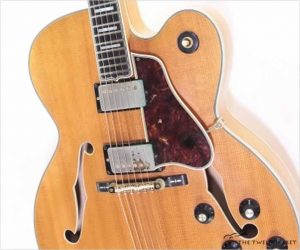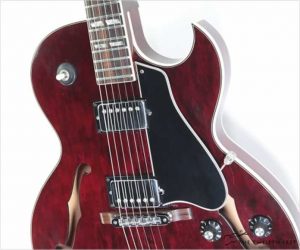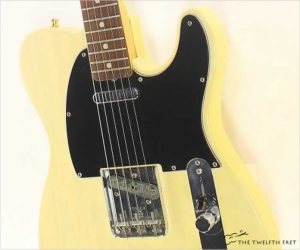The Gibson Byrdland appeared in 1955 as a custom order for Billy Byrd and Hank Garland. These two were top Nashville session guitarists who wanted full archtop tone, but in a more comfortable thinner body and a shorter scale length – 23.5 inches, rather than Gibson’s standard 24.75 inches – to allow easier access to complex chords fingerings. The Byrdland was the first of Gibson’s thinline archtop guitars, with many more to follow. The design was so successful that it was quickly promoted to production status.
This instrument has sold
MORE →


